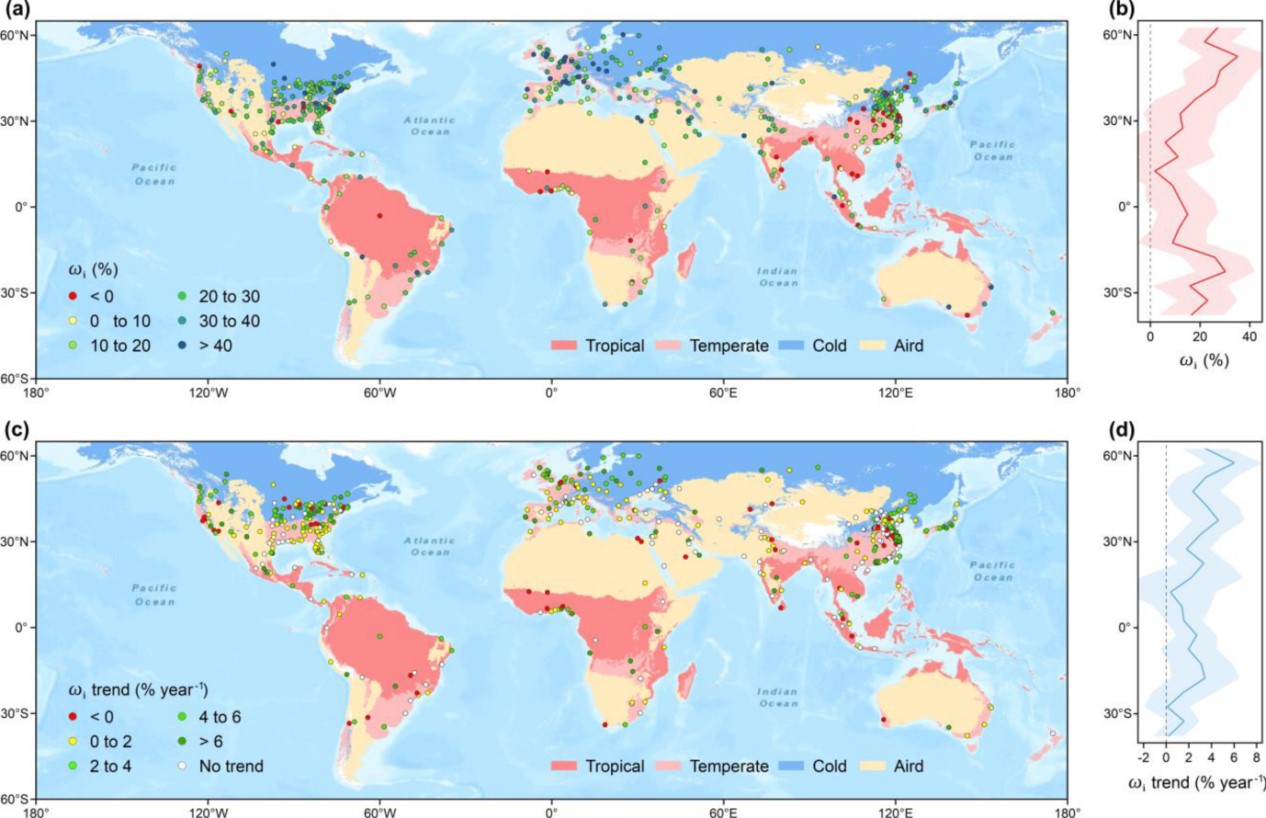Urban Growth Paradox: Cities Indirectly Boost Vegetation’s Carbon Capture Despite Green Land Loss, Study Reveals
A global study led by the Institute of Applied Ecology, Chinese Academy of Sciences, in collaboration with Fudan University, Wuhan University, and Princeton University, has uncovered a counterintuitive relationship between urbanization and vegetation’s carbon sequestration capacity. Published in Geography and Sustainability, the research analyzed 508 major cities from 2000–2020 using multi-source remote sensing data, revealing that while urban expansion directly harms carbon absorption, indirect human-driven factors partially offset these losses (Fig. 1).
Urbanization’s direct effects—largely negative—stem from replacing natural vegetation with impervious surfaces like roads and buildings. For instance, China lost 8.65 teragrams of vegetation carbon stocks over 20 years due to urban sprawl. Globally, this direct impact reduced cities’ net ecosystem productivity (NEP), a measure of carbon sequestration.
However, the study highlights a lesser-known indirect effect: human management practices and urban microclimates, such as controlled irrigation, elevated CO2 levels, and the urban heat island (UHI) effect, enhanced NEP in 446 cities. On average, this indirect boost increased carbon sequestration by 19.6%, compensating for 14.7% of direct losses. The phenomenon, termed "vegetation facilitation," is most pronounced in older, densely populated cities.
Indirect gains varied sharply by climate zone. Arid regions experienced the largest NEP increases (32.95%), followed by cold and temperate zones, while tropical cities experienced minimal gains. Researchers attribute this to water and heat limitations: in drier or cooler areas, urban irrigation and UHI effects alleviate environmental stressors, whereas tropical vegetation, already thriving in stable conditions, benefits less from human interventions.
The dual effects underscore urbanization’s complex effects on NEP and carbon sequestration. For example, UHI warming can suppress carbon uptake in summer but extend growing seasons in cooler months. Figure 1 illustrates these spatial patterns, showing stronger indirect impacts at mid-to-high latitudes and temporal trends linked to urban development intensity.
The findings urge policymakers to prioritize green infrastructure in water-limited regions and integrate microclimate management into urban planning.




